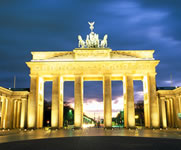
For more than 50 years, the hallmark of the Romantic Road has been its wonderful combination of nature, culture and hospitality. Germany's most famous and popular tourist route runs for 350 romantic kilometres across a rich and varied cultural landscape along the river Main and through the Franconian wine country to the Alps. This fantastic route between Würzburg and Füssen offers visitors the opportunity to see small historic towns with impressive buildings and places of historical interest that have lost nothing of their original charm. The route leads through the charming Tauber Valley, the Nördlinger Ries situated in the heart of a giant crater, the picturesque Lechfeld plain, Pfaffenwinkel (Parsons' Corner) - a land of farmers, artists and monks in the foothills of the Upper Bavarian Alps - before finally ending up at King Ludwig's famous fairytale castles.

The very name of the Romantic Road expresses the sentiment that many visitors, both from Germany and abroad, feel when they first feast their eyes on this spectacular backdrop of riches, western history, art and culture: fascination and a sense of being taken back in time. But beautiful scenery and culinary delights are by no means all a trip along the Romantic Road has to offer. You'll also hear a few famous names along the way: Balthasar Neumann, who built the Würzburg Residenz Palace, Tilmann Riemenschneider in the charming Tauber Valley and Carl Spitzweg, a great fan of Rothenburg and Dinkelsbühl. Geological enthusiasts will be in their element in the Nördlinger Ries, while visitors to Augsburg will encounter the legacy of the Romans and the Fuggerei, the world's first welfare housing project, which dates from the 16th century. Pfaffenwinkel is home to the Wieskirche Pilgrimage Church, a UNESCO world heritage site and one of the most famous works of art from the rococo period. Schwangau, home of King Ludwig's fairytale castles, is surrounded by four lakes and set against the backdrop of the Ammer mountains nature conservation area.







